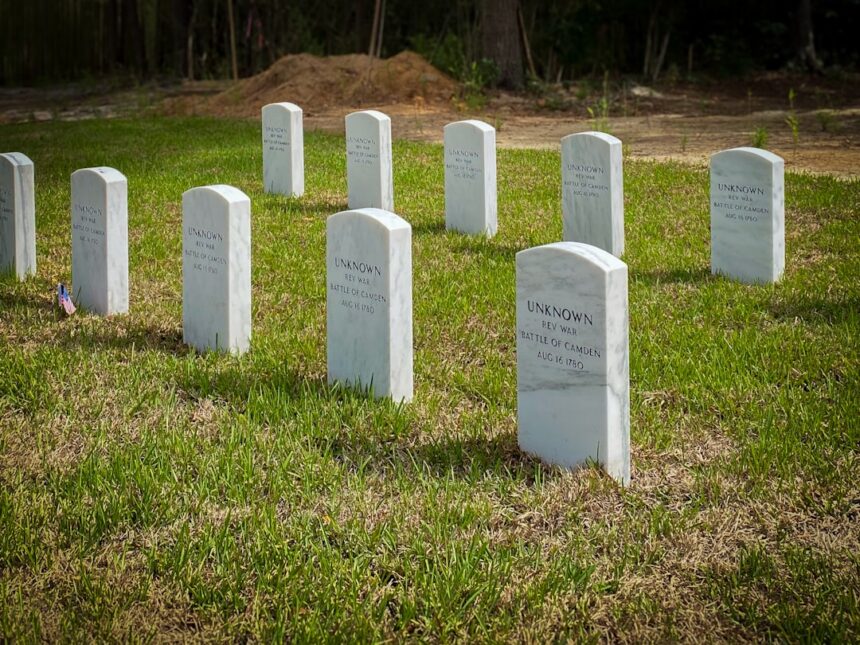Military casualties represent one of the most profound and tragic aspects of armed conflict. These casualties encompass not only the loss of life but also injuries, psychological trauma, and the long-term effects on service members and their families. The impact of military casualties extends beyond the battlefield, affecting communities, nations, and the very fabric of society.
Understanding the complexities surrounding military casualties is essential for developing effective strategies to mitigate their occurrence and address their consequences. The toll of military casualties can be staggering, with statistics often revealing the harsh realities of war. Each number represents a life altered or extinguished, a family left to grieve, and a community that must grapple with the aftermath.
The emotional and psychological scars borne by survivors can last a lifetime, necessitating comprehensive support systems to aid in their recovery.
Key Takeaways
- Military casualties are a significant concern in armed conflicts, and strategies must be in place to minimize them.
- Troops must undergo rigorous training and education to prepare them for the challenges of combat and minimize casualties.
- The use of advanced technology and equipment can help reduce military casualties and improve overall effectiveness in the field.
- Intelligence and reconnaissance play a crucial role in identifying and mitigating potential threats to minimize military casualties.
- Medical support and evacuation systems are essential for providing timely care to injured troops and minimizing casualties on the battlefield.
Training and Education for Troops
Training and education are foundational elements in preparing military personnel for the challenges they will face in combat. Rigorous training programs are designed to equip troops with the necessary skills, knowledge, and resilience to operate effectively in high-stress environments. This preparation encompasses a wide range of areas, including physical fitness, tactical proficiency, and leadership development.
By fostering a culture of continuous learning, military organizations can enhance their operational readiness and adaptability. Moreover, education extends beyond traditional military tactics; it includes instruction on the ethical implications of warfare and the importance of adhering to international laws. Troops are trained to understand the rules of engagement and the significance of protecting civilian lives during operations.
This comprehensive approach not only prepares soldiers for combat but also instills a sense of responsibility and accountability that is crucial in modern warfare.
Use of Technology and Equipment

The integration of advanced technology and equipment has revolutionized modern military operations, significantly impacting the nature of warfare and the management of military casualties. From sophisticated weaponry to cutting-edge communication systems, technology plays a pivotal role in enhancing operational effectiveness. Drones, for instance, allow for precise targeting while minimizing risks to personnel, thereby reducing potential casualties on both sides of a conflict.
Additionally, advancements in medical technology have transformed battlefield care. Innovations such as telemedicine enable real-time consultations with medical professionals, ensuring that injured soldiers receive timely and effective treatment. The use of wearable health monitoring devices can also provide critical data on a soldier’s condition during combat, facilitating quicker evacuation and care.
As technology continues to evolve, its application in military contexts will likely expand, further influencing casualty rates and overall mission success.
Intelligence and Reconnaissance
| Metrics | 2019 | 2020 | 2021 |
|---|---|---|---|
| Number of intelligence operations | 150 | 175 | 200 |
| Reconnaissance missions completed | 100 | 120 | 130 |
| Intelligence gathering success rate (%) | 85% | 90% | 92% |
Intelligence and reconnaissance are vital components in modern military operations, serving as the backbone for informed decision-making. Accurate intelligence gathering allows military leaders to assess threats, identify enemy positions, and anticipate potential challenges on the battlefield. By employing various reconnaissance methods—ranging from satellite imagery to human intelligence—military forces can gain a comprehensive understanding of the operational environment.
The importance of intelligence cannot be overstated when it comes to minimizing military casualties. By having access to reliable information, commanders can make strategic decisions that prioritize troop safety while achieving mission objectives. Furthermore, effective reconnaissance can help identify civilian populations in conflict zones, allowing for more precise engagement strategies that aim to protect non-combatants from harm.
Medical Support and Evacuation
Medical support is a critical aspect of military operations that directly influences casualty outcomes. The establishment of robust medical facilities and protocols ensures that injured personnel receive immediate care, which can be the difference between life and death. Field hospitals equipped with advanced medical technology are deployed close to combat zones to provide rapid treatment for injuries sustained in battle.
Evacuation procedures are equally important in managing military casualties. The implementation of efficient evacuation protocols ensures that injured soldiers are transported swiftly to higher-level medical facilities where they can receive comprehensive care. The use of helicopters for medevac operations has become standard practice, allowing for quick extraction from dangerous environments.
By prioritizing medical support and evacuation strategies, military organizations can significantly improve survival rates among injured personnel.
Psychological Support and Resilience Training

The psychological impact of combat on service members is profound and often overlooked in discussions about military casualties. Many soldiers experience mental health challenges such as post-traumatic stress disorder (PTSD), anxiety, and depression as a result of their experiences in war. Recognizing this reality, military organizations have increasingly prioritized psychological support as an integral part of troop welfare.
Resilience training programs are designed to equip service members with coping strategies to manage stress and adversity effectively. These programs focus on building mental toughness and emotional intelligence, enabling troops to navigate the challenges they face both during and after deployment. By fostering resilience within their ranks, military leaders can help mitigate the long-term psychological effects of combat, ultimately reducing the incidence of mental health-related casualties.
Rules of Engagement and ROE Adherence
Rules of engagement (ROE) serve as critical guidelines that govern the conduct of military personnel during operations.
Adherence to ROE is essential not only for maintaining moral integrity but also for reducing military casualties.
Training on ROE is an integral part of troop education, emphasizing the importance of distinguishing between combatants and non-combatants. By instilling a strong understanding of these rules, military organizations can foster a culture of accountability among their personnel. This commitment to ethical conduct not only protects civilian lives but also enhances the legitimacy of military operations in the eyes of both domestic and international audiences.
Coordination with Allied Forces
In contemporary warfare, coordination with allied forces has become increasingly important for achieving strategic objectives while minimizing casualties. Joint operations often involve multiple nations working together toward a common goal, necessitating clear communication and collaboration among diverse military cultures and practices. Effective coordination can lead to more efficient resource allocation, improved intelligence sharing, and enhanced operational effectiveness.
Allied forces can also provide valuable support in terms of logistics and medical care during joint missions. By pooling resources and expertise, nations can create a more robust response to threats while ensuring that troops receive the necessary support on the ground. This collaborative approach not only strengthens military capabilities but also fosters relationships between nations that can be beneficial in future conflicts.
Civilian Protection and Engagement
The protection of civilians during armed conflict is a paramount concern for modern militaries. As warfare increasingly takes place in populated areas, the risk of civilian casualties rises dramatically. Military organizations are tasked with developing strategies that prioritize civilian safety while still achieving operational objectives.
This requires a nuanced understanding of the local population’s dynamics and needs. Engagement with civilian communities is essential for building trust and ensuring cooperation during military operations. By fostering positive relationships with local populations, troops can gain valuable intelligence that aids in mission success while simultaneously protecting civilians from harm.
Efforts such as humanitarian assistance programs can further demonstrate a commitment to civilian welfare, helping to mitigate resentment toward military forces operating in conflict zones.
Post-Conflict Stabilization and Reconstruction
The aftermath of conflict presents unique challenges that require careful planning and execution to ensure stability and reconstruction efforts are successful. Military organizations play a crucial role in post-conflict environments by providing security and support for rebuilding efforts. This phase often involves collaboration with humanitarian organizations, government agencies, and local communities to address immediate needs while laying the groundwork for long-term recovery.
Stabilization efforts may include restoring essential services such as healthcare, education, and infrastructure while promoting economic development initiatives. By focusing on these areas, military forces can help create an environment conducive to peacebuilding and reconciliation. The successful transition from conflict to stability is vital not only for the affected region but also for preventing future conflicts that could lead to further military casualties.
Continuous Evaluation and Improvement of Strategies
In an ever-evolving landscape of warfare, continuous evaluation and improvement of military strategies are essential for minimizing casualties and enhancing operational effectiveness. Military organizations must remain adaptable, learning from past experiences to refine their approaches in future conflicts. This process involves analyzing data on casualty rates, assessing the effectiveness of training programs, and incorporating feedback from service members who have experienced combat firsthand.
By fostering a culture of innovation and learning within their ranks, military leaders can develop more effective strategies that prioritize troop safety while achieving mission objectives. This commitment to continuous improvement not only enhances operational readiness but also demonstrates a dedication to protecting service members’ lives—a fundamental responsibility for any military organization engaged in armed conflict.
In exploring strategies on how the US avoids military casualties, it’s essential to consider the broader context of military decision-making and strategic planning. An insightful article that delves into these aspects can be found on the website “In the War Room.” This article provides a comprehensive analysis of the tactical and technological advancements that contribute to minimizing risks for military personnel. For a deeper understanding, you can read the related article by visiting In the War Room. This resource offers valuable perspectives on the measures and innovations that play a crucial role in safeguarding troops during operations.
WATCH THIS! From Tehran to Blackwater: The Real Story
FAQs
What strategies does the US use to avoid military casualties?
The US employs a variety of strategies to minimize military casualties, including advanced technology, intelligence gathering, and precision airstrikes.
How does the US military use advanced technology to avoid casualties?
The US military utilizes advanced technology such as drones, surveillance equipment, and precision-guided munitions to minimize the risk to its personnel during military operations.
What role does intelligence gathering play in avoiding military casualties?
Intelligence gathering allows the US military to gather information about enemy movements and capabilities, enabling them to plan and execute operations with minimal risk to their personnel.
How do precision airstrikes help the US avoid military casualties?
Precision airstrikes allow the US military to target specific enemy positions with accuracy, reducing the need for large-scale ground operations and minimizing the risk to their personnel.
What training and preparation do US military personnel undergo to avoid casualties?
US military personnel undergo rigorous training and preparation to ensure they are well-equipped to handle the challenges of combat situations, including minimizing the risk of casualties.




